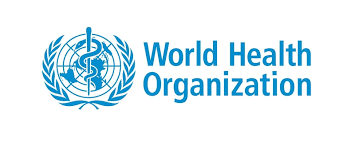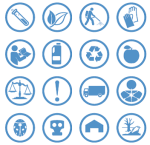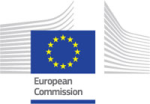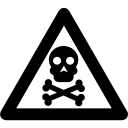Hazard classifications
Source | Explanation | Links | Pesticides classified? | GHS compatible? |
|---|---|---|---|---|
GHS Revision 8 (2019) | no | yes | ||
WHO - Classification of Pesticide by Hazard | yes | no | ||
WHO - International Agency for Research On Cancer (IARC) - Agents classified by the IARC monographs | yes | no | ||
International Chemical Safety Cards (ICSC) - Database search | yes | yes | ||
FAO - Guidelines on Highly Hazardous Pesticides | no | yes | ||
OECD eChemPortal - Classification Search | yes | some | ||
EU Pesticides Database | yes | yes | ||
European Chemicals Agency (ECHA) - C&L Inventory | yes | yes | ||
US EPA carcinogenicity evaluation - Database for Chemical Information | yes | no | ||
Australia - Hazardous Chemical Information System (HCIS) | yes | yes | ||
New Zealand - Chemical Classification and Information Database (CCID) | yes | no |
International sources
GHS
![]() The Globally harmonized system of classification and labelling of chemicals (GHS) establishes classification criteria for physical, health and environmental hazards of chemicals, along with associated hazard communication elements, notably pictograms, signal words, and hazard statements for use on labels. The hazard classification of the GHS refers principally to the hazards arising from the intrinsic properties of the pesticide.
The Globally harmonized system of classification and labelling of chemicals (GHS) establishes classification criteria for physical, health and environmental hazards of chemicals, along with associated hazard communication elements, notably pictograms, signal words, and hazard statements for use on labels. The hazard classification of the GHS refers principally to the hazards arising from the intrinsic properties of the pesticide.
The GHS applies to all chemicals and mixtures of chemicals, but excludes pharmaceuticals, food additives, cosmetics and pesticide residues in food. Pesticides are thus included in the GHS.
The GHS aims at ensuring that information on physical hazards and toxicity from chemicals be available in order to enhance the protection of human health and the environment during the handling, transport and use of these chemicals. The GHS also provides a basis for harmonization of rules and regulations on chemicals at national, regional and worldwide level. The GHS is increasingly being used as a basis for hazard communication on the labels of pesticides.
Unlike the WHO Recommended classification of pesticides by hazard, the GHS does not classify individual chemicals; this has to be done by national or regional regulatory authorities on the basis of the GHS criteria. To this end, the GHS provides criteria for the classification of the pure chemical (i.e. pesticide active ingredient), formulas on how to calculate the classification of diluted products (e.g. for acute toxicity), as well as cut-off criteria or concentration limits indicating how diluted products may (or may not) be classified (e.g. for chronic toxicity).
The latest version of the GHS can be found on the web site of the United Nations Economic Commission for Europe (UNECE).
WHO Classification
 The WHO Recommended classification of pesticides by hazard categorizes pesticide active ingredients according to their acute oral and dermal toxicity (that is, the hazard of single or multiple exposure over a relatively short period of time). For some pesticides, chronic toxicity has also been taken into account.
The WHO Recommended classification of pesticides by hazard categorizes pesticide active ingredients according to their acute oral and dermal toxicity (that is, the hazard of single or multiple exposure over a relatively short period of time). For some pesticides, chronic toxicity has also been taken into account.
The final classification of any pesticide product is intended to be by formulation. The classification given in the tables in the WHO document is of active ingredients, and only forms the starting point for the final classification of an actual formulation. It is preferable that the final classification of a formulation is based on toxicity data obtained on that specific formulation. The criteria set out in the table of Part I of the Classification are then applied to this first-hand data.
Only if formulation toxicity data are not available should the formula be used which is shown on page 4 of Part I, to extrapolate the LD50 of the formulation from that of the active ingredient.
The WHO Classification 2009 has been brought in line with the Globally harmonized system of classification and labelling of chemicals (GHS). However, the classification criteria are not identical to the GHS.
The WHO Recommended classification of pesticides by hazard & Guidelines to classification 2019 is available on the WHO web site.
WHO – International Agency for Research On Cancer (IARC)
![]() The International Agency for Research on Cancer (IARC) is a specialized institution of WHO which carries out reviews of environmental factors that can increase the risk of human cancer, including some pesticides, and publish them in the form of scientific monographs. They subsequently classify these agents according to carcinogenic potential.
The International Agency for Research on Cancer (IARC) is a specialized institution of WHO which carries out reviews of environmental factors that can increase the risk of human cancer, including some pesticides, and publish them in the form of scientific monographs. They subsequently classify these agents according to carcinogenic potential.
The list of agents classified by IARC is regularly updated and available on the IARC web site.
Detailed information on the establishment of the classifications can be found in the IARC Monographs.
International Chemical Safety Cards (ICSC)
 The ICSC are compiled by a group of scientists working for specialized scientific institutions concerned with occupational health and safety in different countries, and coordinated by the World Health Organization (WHO) and the International Labour Office (ILO), with the cooperation of the European Commission.
The ICSC are compiled by a group of scientists working for specialized scientific institutions concerned with occupational health and safety in different countries, and coordinated by the World Health Organization (WHO) and the International Labour Office (ILO), with the cooperation of the European Commission.
The ICSC are data sheets that provide essential safety and health information on chemicals in a clear and concise way, and in a fixed format.
The ICSC presently contain up to three types of hazard classifications:
- European Union (EC) hazard classification (old system: the so-called Dangerous Substances Directive)
- UN classification for transport of dangerous goods
- GHS classification – Not all pesticides have been classified according to the GHS as yet. (Note that the new European Union Classification, Labelling and Packaging (CLP) Regulation (2008) corresponds to the GHS)
The ICSC database provides the most recent data sheets in English
ICSC are also available in various other languages
Highly Hazardous Pesticides
 The International Code of Conduct on Pesticide Management defines a highly hazardous pesticides (HHPs) as:
The International Code of Conduct on Pesticide Management defines a highly hazardous pesticides (HHPs) as:
pesticides that are acknowledged to present particularly high levels of acute or chronic hazards to health or environment according to internationally accepted classification systems such as WHO or GHS or their listing in relevant binding international agreements or conventions. In addition, pesticides that appear to cause severe or irreversible harm to health or the environment under conditions of use in a country may be considered to be and treated as highly hazardous.
Criteria to identify what may constitute a highly hazardous pesticide (HHP) have been set by the Joint FAO/WHO Meeting on Pesticide Management (JMPM).
FAO and WHO have developed Guidelines on Highly Hazardous Pesticides (2016) which provide advice on identifying and evaluating HHPs, as well as on measures that can be taken to reduce their risks.
OECD eChemPortal - Classification Search
 The eChemPortal is hosted by the Organisation for Economic Co-Operation and Development (OECD)
The eChemPortal is hosted by the Organisation for Economic Co-Operation and Development (OECD)
The eChemPortal provides access to information on properties of chemicals, including on pesticides and biocides. It provides direct links to collections of information prepared for government chemical programmes at national, regional, and international levels. eChemPortal also makes available national/regional classification results according to national / regional hazard classification schemes or according to the Globally Harmonized System of Classification and Labelling of Chemicals (GHS).
Hazard classifications of pesticides from different sources can be found through the Classification Search page.
Regional or national sources
EU Pesticides Database
 Hazard classifications of pesticides used as plant protection products and evaluated by the European Union can be found in the EU Pesticides Database.
Hazard classifications of pesticides used as plant protection products and evaluated by the European Union can be found in the EU Pesticides Database.
- Access the EU Pesticides Database.
- Click on “search active substances” in the left-menu.
- Find a specific active ingredient by entering it in the search box, or scroll down the active substance list.
- Click on “+” to access the data page on this active ingredient.
- The hazard classification is listed in a separate section on the data page.
If a pesticide is approved and no hazard classification is listed, implies that the compound does not pose one of the hazards as defined in the EU Regulation 1272/2008 on classification, labelling and packaging (which is basically identical to the GHS).
Note that for pesticides not approved and/or evaluated through the EU regional pesticide registration system, the hazard classification may be lacking altogether in the EU Pesticides Database. In such a case, the ECHA C&L database, mentioned in the next section, can be checked as it may provide the hazard classification of such compounds.
European Chemicals Agency (ECHA) - Classification & Labelling (C&L) Inventory
 The EU classification of chemical substances follows the Globally Harmonized System of Classification and Labelling of Chemicals (GHS). However, ECHA also classifies individual chemicals (including pesticides). These classi1fications, and associated signal words, hazard symbols and hazard statements, can be accessed through the ECHA Classifcation & Labelling (C&L) Inventory.
The EU classification of chemical substances follows the Globally Harmonized System of Classification and Labelling of Chemicals (GHS). However, ECHA also classifies individual chemicals (including pesticides). These classi1fications, and associated signal words, hazard symbols and hazard statements, can be accessed through the ECHA Classifcation & Labelling (C&L) Inventory.
To consult the inventory:
- Access the C&L Inventory
- Click on the "CL inventory" link to display the search fields
- Tick the legal disclaimer and click on the Search button
- Enter the pesticide common name in the "substance name" field (or use another identifier such as the CAS number)
- On the results page, scroll down a bit and click on the "view" icon of the relevant substance

- The subsequent results page shows the official EU classification of the pesticide active ingredient: hazard classes and category codes, hazard statement and hazard symbols. The first section, on harmonized classification, is in line with the GHS.
- More information on the hazard classification can be found in Regulation (EC) No 1272/2008
US EPA carcinogenicity evaluation
 The US Environmental Protection Agency publishes a List of Chemicals Evaluated for their Carcinogenic Potential. The list represents the potential carcinogenicity hazard for the chemical with no consideration of exposure information. The classification is therefore not intended to be used independent of the full risk assessment for the chemical. In principle, this list is updated annually.
The US Environmental Protection Agency publishes a List of Chemicals Evaluated for their Carcinogenic Potential. The list represents the potential carcinogenicity hazard for the chemical with no consideration of exposure information. The classification is therefore not intended to be used independent of the full risk assessment for the chemical. In principle, this list is updated annually.
The US EPA has changed its cancer assessment guidelines, and associated classifications, several times to reflect the better understanding of cancer mechanisms. Therefore, the listed cancer classification for each pesticide should be read against the guidelines effective at the date of evaluation (listed in the last column of the table). Links to these various guidelines are provided as hyperlinks in the introduction to the table.
- Go to the National Pesticide Information Center (NPIC) page on Databases for Chemical Information.
- Scroll down to “Cancer Classifications”
- Click on “Chemicals Evaluated for their Carcinogenic Potential” to download the list.
Australia – HCIS
 The Hazardous Chemical Information System (HCIS) is hosted by SafeWork Australia. It provides hazard classifications of chemicals according to the GHS, based on authoritative national and other sources. The system also allows searching for Australian workplace exposure standards.
The Hazardous Chemical Information System (HCIS) is hosted by SafeWork Australia. It provides hazard classifications of chemicals according to the GHS, based on authoritative national and other sources. The system also allows searching for Australian workplace exposure standards.
Click on “search hazardous chemicals” in the left-hand menu for the hazard classifications
Click on “search exposure standards” to find workplace exposure standards.
New Zealand – CCID
![]() The Chemical Classification and Information Database (CCID) is hosted by the New Zealand Environmental Protection Authority.
The Chemical Classification and Information Database (CCID) is hosted by the New Zealand Environmental Protection Authority.
Chemicals in the CCID are classified in accordance with the Hazardous Substances and New Organisms (HSNO) regulations of New Zealand. The coding of the hazard classes of the HSNO are different from the GHS, although the classification criteria are often (though not always) identical. The web site provides a correlation table of the GHS and the HSNO.



